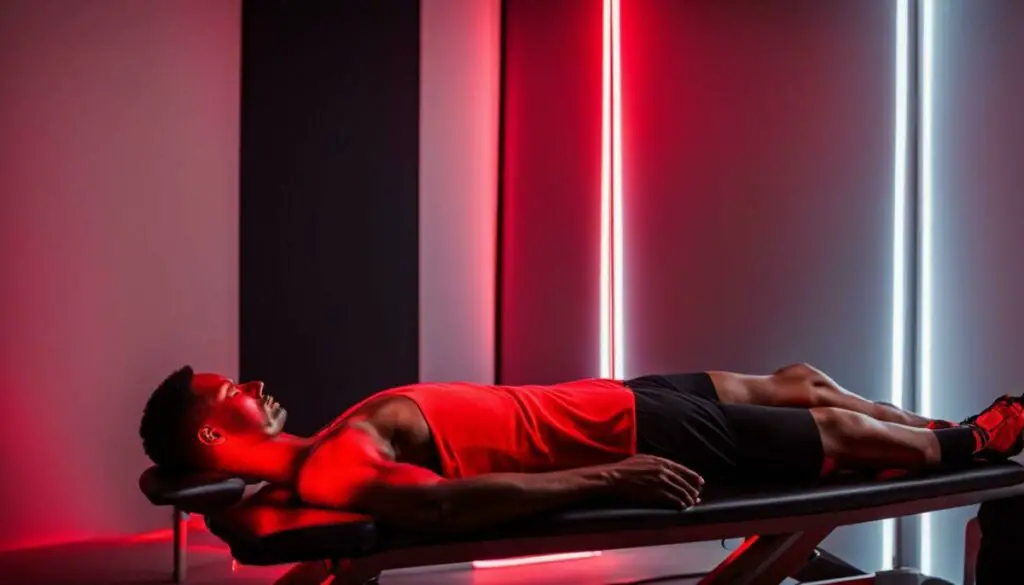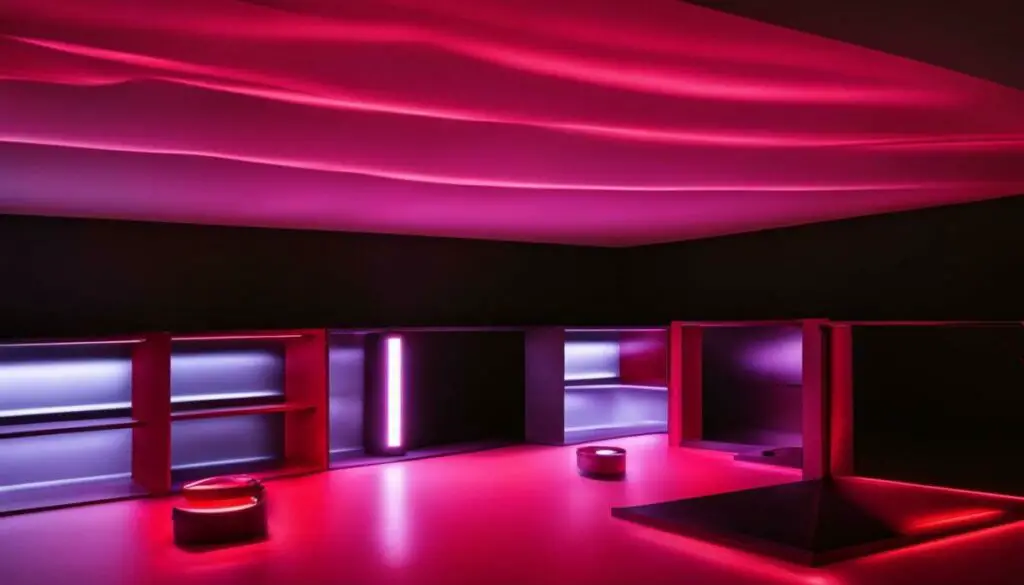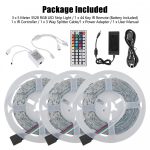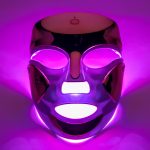Last Updated on 7 months by Francis
If you’re exploring red light therapy as a healing and wellness option, you might be wondering about the differences between incandescent and LED options. While both types of therapy can offer unique benefits, understanding the distinctions between them can help you make an informed decision that best suits your needs. In this article, we’ll dive into the ins and outs of red light therapy using incandescent and LED lights, explore their benefits, and provide a straightforward comparison.
But before we get into that, let’s first understand what red light therapy is and its various benefits.
Contents
Key Takeaways:
- Red light therapy is a non-invasive treatment that uses low-level red light wavelengths to stimulate natural healing processes in the body.
- Both incandescent and LED red light therapy can be effective for improving skin health, promoting muscle recovery, relieving pain, and reducing signs of aging.
- LED lights are more energy-efficient and have a longer lifespan compared to incandescent bulbs.
- LED red light therapy devices offer more precise and targeted treatment due to their focused light emission.
- When considering incandescent vs LED red light therapy, personal preference, budget, and intended treatment goals should be taken into account.
What is Red Light Therapy?
Red light therapy, also known as photobiomodulation, is a non-invasive treatment that uses low-level red light wavelengths to stimulate natural healing processes in the body. It has been shown to have numerous benefits for skin health, muscle recovery, pain relief, and anti-aging. Red light therapy works by penetrating the skin and stimulating the mitochondria, which produces energy for the cells and helps reduce inflammation.
The therapy can be administered using incandescent or LED bulbs, which emit different wavelengths of light. The light penetrates the skin to a depth of around 10mm, providing a range of benefits throughout the body.
One of the key benefits of red light therapy is its ability to stimulate collagen production, which helps improve skin elasticity and reduce the appearance of wrinkles. It can also improve the complexion by reducing inflammation and promoting circulation.
Red light therapy has been found to be effective for reducing pain and inflammation, making it a popular option for athletes and people recovering from injuries. The therapy has also been shown to improve muscle recovery by increasing blood flow to the affected area and reducing inflammation.
Another benefit of red light therapy is its anti-aging properties. The therapy has been shown to improve the appearance of fine lines and wrinkles, as well as age spots and other signs of aging. Red light therapy can also help improve skin texture and tone.
Overall, red light therapy is a safe and effective treatment with numerous benefits for skin health, muscle recovery, pain relief, and anti-aging. It is a non-invasive alternative to other forms of therapy and can be administered at home or in a professional setting.
Understanding Incandescent Red Light Therapy
Incandescent red light therapy is a type of red light therapy that uses traditional incandescent bulbs as a light source. These bulbs emit a broad spectrum of light, including red wavelengths that are beneficial for therapeutic purposes. Incandescent therapy is often used for improving skin conditions, such as acne and wrinkles, as well as promoting muscle recovery after intense workouts.
Incandescent red light therapy devices vary in size and shape. They can be used for targeted treatment of specific areas, such as the face or large muscle groups, like the legs or back. When used for treating skin conditions, the light penetrates the skin and stimulates collagen production, which helps to reduce the appearance of fine lines and wrinkles. For muscle recovery purposes, the light helps to increase blood flow and reduce inflammation, which can alleviate soreness and stiffness.
One potential drawback of incandescent red light therapy is the heat emitted by the bulbs. This can be uncomfortable for some users, particularly during longer treatment sessions. It is important to follow manufacturer guidelines and use caution when using incandescent therapy to prevent burns or other skin damage.

Despite this, incandescent red light therapy is a popular and effective option for those looking to improve their skin’s appearance or promote muscle recovery. It is safe and easy to use at home with the convenience of a handheld device or larger panel.
Exploring LED Red Light Therapy
LED red light therapy is a popular option for those seeking pain relief, anti-aging treatments, and skin health improvement. It involves the use of Light Emitting Diode (LED) bulbs that emit specific red wavelengths within the therapeutic range.
Research has shown that LED therapy can be effective in reducing pain and inflammation, improving skin texture and tone, and reducing signs of aging. LED lights are also more energy-efficient and have a longer lifespan compared to incandescent bulbs, making them a cost-effective and durable option.
LED red light therapy devices offer precise and targeted treatment due to their focused light emission. They can be designed with specific wavelengths and intensity levels to address particular skin concerns or areas of the body.
One common misconception about LED red light therapy is that it may not penetrate deep enough to provide sufficient therapeutic benefits. However, modern LED devices are designed to emit wavelengths that can penetrate deep into the skin and stimulate natural healing processes.
LED red light therapy is also a convenient option as it can be used in the comfort of your own home. However, it is important to note that results may vary based on the quality and specific device used, as well as individual response. Consult with a healthcare professional before starting any new treatment, especially if you have any underlying health conditions or concerns.
The Differences in Light Emission
One crucial factor to consider when choosing between incandescent and LED red light therapy is the type of light emission. Incandescent bulbs emit a broad spectrum of light, including infrared and heat, alongside red wavelengths. LED bulbs, however, emit only a narrower range of red wavelengths specifically within the therapeutic range.
This difference means that incandescent bulbs may generate more heat and consume more energy, whereas LED bulbs are more efficient and cooler in temperature. LED bulbs provide a more concentrated and targeted treatment since they emit only the necessary wavelengths, making them suitable for more precise skin treatment and pain relief applications.
However, incandescent bulbs may be more appropriate for those seeking a broader coverage of light. They are effective for treating larger areas of the body, promoting muscle recovery, and improving skin conditions such as wrinkles and acne.

Ultimately, the choice between incandescent and LED red light therapy depends on individual preferences, treatment goals, and budget. It’s crucial to consider the trade-offs between energy efficiency, light emission, intensity, and lifespan before making a final decision.
Energy Efficiency and Lifespan
When it comes to energy efficiency and lifespan, LED red light therapy has a clear advantage over incandescent therapy. LED lights are highly energy-efficient, consuming less power to produce the desired therapeutic wavelength. This makes them a cost-effective option in the long run, as they can reduce energy bills and are more environmentally-friendly. LED bulbs also have a much longer lifespan compared to incandescent bulbs, typically lasting up to 100,000 hours or more.
Incandescent red light therapy, on the other hand, is less energy-efficient and may consume more power over time. These bulbs also have a shorter lifespan, typically lasting up to 5,000 hours. This means they need to be replaced more frequently, adding to the overall cost of the device.
While LED red light therapy devices may have a higher upfront cost, they can last for years without requiring bulb replacements or significant maintenance. This makes them a more cost-effective and sustainable option in the long run.

Targeted Treatment and Intensity
When it comes to targeted treatment and intensity, LED red light therapy devices have the advantage. LED bulbs emit a narrow range of red wavelengths, allowing for more precise and concentrated treatment of specific areas or skin concerns. This is particularly useful for pain relief and anti-aging treatments, as well as targeting smaller muscle groups for recovery.
On the other hand, incandescent red light therapy devices emit a broader spectrum of light, which can be beneficial for providing a wider coverage of therapeutic light. However, the intensity levels may be lower compared to LED therapy.

Overall, the choice between incandescent and LED therapy for targeted treatment and intensity will depend on your specific needs and preferences. If you require more precise treatment of smaller areas or targeted skin concerns, LED therapy may be the better option. If you’re looking for broader coverage of therapeutic light or need a device with lower intensity levels, incandescent therapy may be a better fit.
Cost and Accessibility
When considering red light therapy options, cost and accessibility are important factors to consider.
LED red light therapy devices are generally more expensive upfront but are considered a long-term investment due to their energy efficiency and durability. Incandescent red light therapy devices are often more affordable but may consume more energy and require bulb replacements over time.
Both options offer the convenience of at-home use, allowing for easy integration into daily routines. At-home devices can range from handheld wands to full-body panels, providing personalized treatment options for various health concerns.
Investing in an at-home red light therapy device allows for easy and regular use, potentially leading to better and more consistent results. To ensure safety and effectiveness, always follow manufacturer guidelines and consult with a healthcare professional if you have any underlying health conditions or concerns.

Comparing Effectiveness and Results
The effectiveness of red light therapy depends on various factors, including the specific device used, treatment duration, and individual response. Both incandescent and LED therapy have shown positive results in various health and wellness concerns.
Red light therapy using incandescent bulbs has been shown to be effective in improving skin conditions, such as acne and wrinkles, as well as promoting muscle recovery after intense workouts. This type of therapy emits a broad spectrum of light including beneficial red wavelengths that can penetrate deeper into the skin tissue.
LED red light therapy, on the other hand, has a narrower range of red wavelengths specifically within the therapeutic range. It is commonly used for pain relief, anti-aging treatments, and improving skin health. The focused light emission of LED bulbs allows for more precise and targeted treatment with specific wavelengths and intensity levels to address particular skin concerns or areas of the body.
Studies have shown positive results for both incandescent and LED therapy in pain relief, anti-aging, muscle recovery, and improving skin health. Personal preference, budget, and intended treatment goals should be considered when choosing between the two options.

Regardless of the type of therapy chosen, it is important to follow recommended guidelines for treatment duration, intensity level, and distance from the light source. It is advisable to consult with a healthcare professional if you have any underlying health conditions or concerns.
Red Light Therapy vs Other Light Therapy Options
Red light therapy is just one type of light therapy that can be used to treat various health conditions. It’s important to understand the differences between red light therapy and other light therapy options to determine the most suitable treatment for your needs.
| Light Therapy Type | Benefits | Applications |
|---|---|---|
| Blue light therapy | Targets acne-causing bacteria and reduces inflammation | Acne treatment, seasonal affective disorder (SAD) |
| Green light therapy | Reduces hyperpigmentation and improves skin tone | Skin discoloration, melasma |
| Yellow light therapy | Stimulates collagen production and improves circulation | Wrinkle reduction, skin rejuvenation |
| Infrared therapy | Improves circulation, reduces inflammation, and promotes tissue healing | Joint pain, muscle soreness, wound healing |
While each type of light therapy offers specific benefits and applications, red light therapy has been shown to be effective for a wide range of health and wellness concerns, including pain relief, anti-aging, muscle recovery, and skin health.

Potential Side Effects and Precautions
Red light therapy is generally considered safe and has few side effects. However, it is essential to take necessary precautions to avoid any adverse reactions and maximize the benefits of this therapy.
One of the main precautions is to protect your eyes from direct exposure to the light source. Prolonged exposure to red light may cause eye damage, including retinal damage and vision loss. Make sure to wear protective goggles designed for red light therapy during your session.
It’s also important to avoid overexposure to red light, as it may cause skin irritation and burns. Follow the guidelines provided by the manufacturer regarding the recommended treatment duration and distance between your skin and the device.
If you’re pregnant or have a history of epilepsy or photosensitivity, consult with your healthcare provider before using red light therapy. This therapy may interact with certain medications, such as tetracycline and other photosensitizing drugs.
People with a history of skin cancer or those who are currently undergoing cancer treatment should avoid red light therapy, as it may stimulate the growth of cancer cells.
Remember to prioritize safety and consult with a healthcare professional if you have any underlying health conditions or concerns related to the use of red light therapy.

Making an Informed Choice
After weighing the pros and cons of incandescent and LED red light therapy, it’s time to make an informed decision based on your specific needs and budget.
| Consider | Incandescent | LED |
|---|---|---|
| Light Emission | Broad spectrum, including infrared and heat | Narrow range of red wavelengths within the therapeutic range |
| Energy Efficiency and Lifespan | Less energy-efficient and shorter lifespan | More energy-efficient and longer lifespan |
| Targeted Treatment and Intensity | Broader coverage but lower intensity levels | More precise and targeted treatment with specific wavelengths and intensity levels |
| Cost and Accessibility | More affordable upfront but may consume more energy and require bulb replacements over time | Generally more expensive upfront but considered a long-term investment |
| Effectiveness and Results | Positive results in improving skin conditions and promoting muscle recovery | Positive results in pain relief, anti-aging treatments, and improving skin health |
Ultimately, the decision between incandescent and LED red light therapy should be based on your specific treatment goals and personal preferences. If you’re looking for a broader coverage of light and have a limited budget, incandescent therapy may be the right choice for you. However, if you’re looking for more precise and targeted treatment with long-term cost savings, LED therapy may be the better option.
Keep in mind that the effectiveness of red light therapy also depends on the specific device used, treatment duration, and individual response. It may be helpful to consult with a healthcare professional or do further research to determine the most suitable treatment option for you.
Lastly, it’s important to be aware of potential side effects and take necessary precautions when using any form of light therapy. Follow recommended guidelines and seek professional advice if you have any underlying health conditions or concerns.
 Text.
Text.
Conclusion
After examining the differences between incandescent and LED red light therapy, it is clear that both options offer unique benefits for pain relief, anti-aging, muscle recovery, and improving skin health. LED therapy provides more targeted treatment, energy efficiency, and longer lifespan, while incandescent therapy offers broader coverage and affordability. The choice ultimately depends on personal preference, budget, and intended treatment goals.
Remember to prioritize safety and follow recommended guidelines to avoid potential side effects such as eye damage or skin irritation. It is crucial to seek professional advice if you have any underlying health conditions or concerns before starting red light therapy.
Choose Red Light Therapy for a Range of Health and Wellness Benefits
Red light therapy offers a safe and effective alternative to traditional treatments for a variety of health and wellness concerns. Its non-invasive nature and proven benefits make it an attractive option for those seeking pain relief, anti-aging, muscle recovery, and skin health improvements. Whether you choose incandescent or LED therapy, you can enjoy the benefits of red light therapy in the comfort of your own home.
FAQ
What is red light therapy?
Red light therapy, also known as photobiomodulation, is a non-invasive treatment that uses low-level red light wavelengths to stimulate natural healing processes in the body. It has been shown to improve skin health, promote muscle recovery, relieve pain, and reduce signs of aging.
How does incandescent red light therapy work?
Incandescent red light therapy utilizes traditional incandescent bulbs as a light source. These bulbs emit a broad spectrum of light, including red wavelengths that are beneficial for therapeutic purposes. It is often used for improving skin conditions, such as acne and wrinkles, as well as promoting muscle recovery after intense workouts.
What is LED red light therapy?
LED red light therapy involves the use of Light Emitting Diode (LED) bulbs that specifically emit red wavelengths within the therapeutic range. LED therapy is commonly used for pain relief, anti-aging treatments, and improving skin health. LED lights are more energy-efficient and have a longer lifespan compared to incandescent bulbs.
What is the difference in light emission between incandescent and LED red light therapy?
Incandescent bulbs emit a broader spectrum of light, including infrared and heat, alongside red wavelengths. LED bulbs, on the other hand, emit a narrower range of red wavelengths specifically within the therapeutic range.
Are incandescent or LED red light therapy devices more energy-efficient?
LED lights are known for their energy efficiency and longer lifespan compared to incandescent bulbs. LED red light therapy devices require less power to produce the desired therapeutic wavelength, making them a cost-effective and durable option.
Can incandescent or LED red light therapy be used for targeted treatment?
LED red light therapy devices offer more precise and targeted treatment due to their focused light emission. They can be designed with specific wavelengths and intensity levels to address particular skin concerns or areas of the body. Incandescent therapy provides a broader coverage of light but may have lower intensity levels.
Which is more affordable, incandescent or LED red light therapy?
LED red light therapy devices are generally more expensive upfront but are considered a long-term investment due to their energy efficiency and durability. Incandescent red light therapy devices are often more affordable but may consume more energy and require bulb replacements over time. Both options offer the convenience of at-home use.
How effective are incandescent and LED red light therapy?
The effectiveness of red light therapy depends on various factors, including the specific device used, treatment duration, and individual response. Both incandescent and LED therapy have shown positive results in pain relief, anti-aging, muscle recovery, and improving skin health. Personal preference, budget, and intended treatment goals should be considered when choosing between the two options.
What are the potential side effects of red light therapy?
While red light therapy is generally safe and well-tolerated, it is important to be aware of potential side effects and take necessary precautions. These may include eye protection, avoiding direct exposure to the light source, and following manufacturer guidelines for treatment duration and distance.
How do I make an informed choice between incandescent and LED red light therapy?
After considering the key differences, benefits, and potential side effects of incandescent and LED red light therapy, it’s important to make an informed choice based on your specific needs, treatment goals, and budget. Consult with a healthcare professional if you have any underlying health conditions or concerns.
How does red light therapy compare to other light therapy options?
Red light therapy is one of several light therapy options available for different health conditions. It is important to understand the specific benefits and applications of each type of light therapy, such as blue light therapy or infrared therapy, to determine the most suitable treatment for your needs.
Is red light therapy suitable for everyone?
Red light therapy is generally safe for most individuals. However, certain conditions and medications may be contraindicated. It is recommended to consult with a healthcare professional before starting red light therapy, particularly if you have any underlying health conditions or are taking medications.



.jpg)
.jpg)




